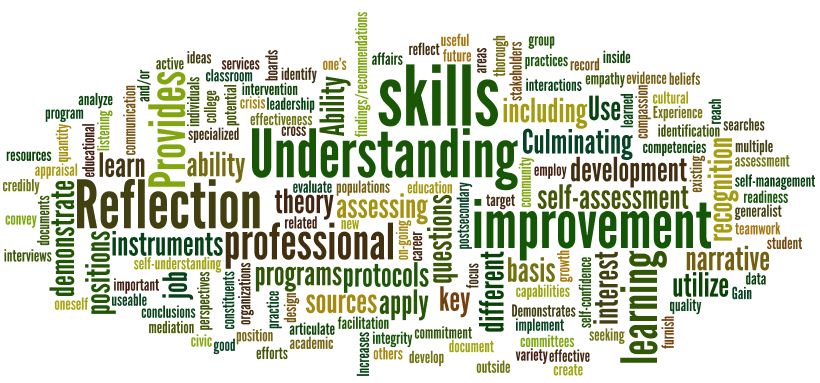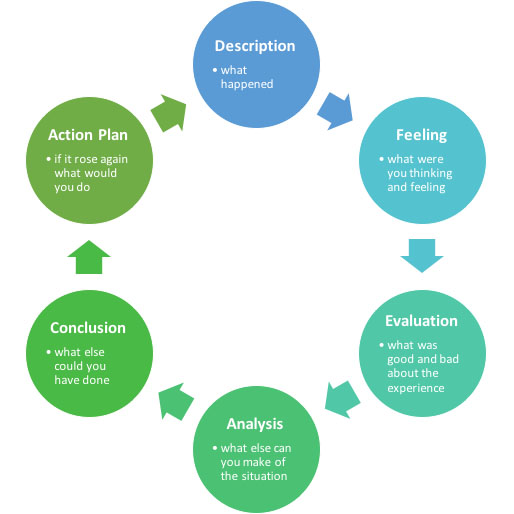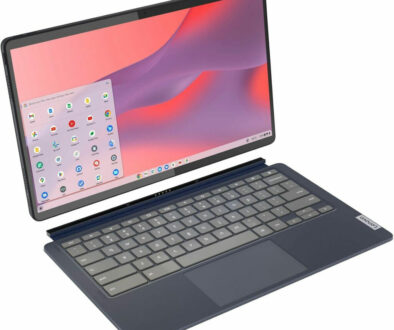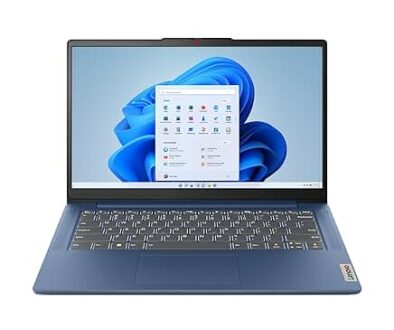Collaborative Blogging as a Reflective Learning Tool
Blogging or web logging has long been used as a journaling method; the recording of one’s written thoughts and sharing it to the public space. In its early days it was often compared to attention-seeking diary keepers, publicly sharing details of their lives; however as Internet connections have grown faster and more reliable, hosting services becoming more adept at allowing embedded media, and media creation and input significantly eased with the development of mobile technology, blogging has grown into a sizeable industry of it’s own.
Blogging in education, in the early days consisted primarily of teachers sharing their experiences, thoughts even classroom activities to a general audience of other teachers. While, some of the more adventurous educators have used blogging, incorporated into their teaching, most students’ experience with blogging have stemmed from Internet and web access courses; or in some cases a general desire to share their own writing and thoughts with the world.

Overall though, the appeal of blogging is one that is more suited to the verbose, fluent writer than just the average student. With a little creativity and imagination though, blogs can be called in to action as a powerful reflective learning tool.
Reflective Learning and the Growth Mindset
When Gibbs’ (1988) outlined the Reflective Learning Cycle in his book, Learning by Doing, he was primarily talking to educators and their teaching practice – to learn by doing, self-reflection and evaluation and then to re-do.
However, the value of the reflective process, if and when trickled down to learners whether by accident or by design, is immense, and both serves and reinforces the Growth mindset as explained by Dweck in her book, Mindset: How you can fulfil your potential.

Where the Growth mindset reinforces the idea that everyone can learn and learn most things well, the reflective learning cycle puts this in to practice, encouraging both teachers and learners to think about what they have learnt or taught and to use a self-evaluation and reflective process to learn ‘deeper’ and understand ‘better’.
In practice reflective learning allows students to step back from their regular learning methodology and develop critical thinking skills to enhance their future performance by analyzing and reviewing their learning experiences – both the content of what they have learnt and the emotions, if any, attached to the learning content.
Through this simple, often very quick review process, whether it is directly within the class time (as set by the teacher) or a self-reflection while the student is walking to the next class, any new material learnt becomes significantly reinforced.
Reflective learners tend to share these common characteristics:
- Very motivated – know what they are trying to achieve and why.
- Proactive in expanding their understanding of new ideas and topics.
- Use their existing knowledge to develop their comprehension of new ideas.
- Understand new concepts by aligning and comparing them to their life experiences.
- Accept and understand that research and extensive reading will improve their comprehension and add value to their writing.
- By evaluating of their previous learning experiences, they will develop their future learning and thinking.
- Become self-aware and are clearly able to identify, explain, and leverage their strengths and work on their weaknesses.
As a pedagogical tool, reflective learning has proven to be a valuable and proven technique for not only schools, but for higher learning and in corporate settings as well.
Reflective Learning in Practice – a habit of thinking and reflection
To being with, incorporating a reflective learning practice does take some thinking and planning, however once in place the reflecting learning practice can become habitual, in which case, the purpose and practise of reflective learning is continually reinforced.
Constant and consistent approach
For teachers to incorporate reflective learning in to their classes particularly at the end of every lesson, means specifically planning the reflective practise in to their class. This can typically be done quickly in the sense that, the last 5 -10 minutes of a lesson, can be set aside for a round of quick-fire questions, or a paired discussion on a specific topic related to the lesson, or individual brief note-writing.
Time efficient review
Reflective learning in practise, once habitual takes a surprisingly short amount of time, as it mostly involves as mental review of the learning that has taken place.
What is Collaborative Blogging
Collaborative blogging can take on many faces, whether it is multiple concurrent writers for one article, writers taking turns in a more linear fashion or a group writing exercise with a single writer and multiple input and feedback.
Each is suited to the variety of possible exercises and scenarios that can be devised to enhance and reinforce learning. Within the classroom setting, for collaborative blogging to be successful, the teacher does need to be very specific both with intentions and outcomes. Strong decisions will have to be made with regards to both approach and whether the final outcome contributes to assessment or will remain non-assessed. Time allotted, while not necessarily significant, needs to be purposeful and focused.
In effect, students create a journal or blog (personal or a group site) to gather observations, thoughts, concerns, notes, progress, and opinions based on their unique interests and the topic of the project that has been assigned. Writing projects build rapport between instructors and students, and among students themselves, contributing to a positive and progressive, two-way learning experience for all.
In an educational setting, journals and blogs need to be more than simply lists of what the students do. The process needs to be used to showcase their thinking process and to share their learning reflections.
Collaborative blogging as a reflective learning tool
When set up and practised effectively and efficiently, collaborative blogging reinforces the reflective learning cycle, which in turn will hopefully lead to deeper learning and better learning skills.
Within the process of collaborative blogging, beyond the ability to write and verbalise, their thoughts, reflections and learning content, participating students also learn to collaborate and function as a group. Often over time, self-division of roles occur as students organize themselves into tasks that suit both their skills and personalities.
Through this process of team work, it may be that rules based on acceptable and unacceptable practises are discussed and incorporated; whether from top down (teacher-defined) or sideways (peer-defined).
Ultimately, the working together on reflective learning, will hopefully lead to the greater practise of empathy and supportive learning, where shared ideas and thoughts take centre stage and less judgment over right and wrong occurs. A great continuous lesson in how different people think, how to agree to disagree and how to share a united outcome.
The degree to which learning is reinforced is of course difficult to assess; what is certain however, is that being able to think and reflect on the content of one’s learning, does allow for further percolation of thoughts and ideas related to the learning content. This in turn provides opportunity for deep learning to occur.
Bring out the best in your students through collaborative blogging as part of your reflective learning curriculum. Share on XThrough the use of the writing process through blogs, students learn to express what they have learnt, alongside their thoughts, ideas and opinions in a context that is larger than a singular audience – the teacher. Through the peer interaction and feedback process, writing and commenting on blogs, they become more aware that their writing is read by an audience; with this in mind, over time, they become more aware that they need to write clearly and in a voice and method that makes their thoughts clear to the reader.
In this way, blogs can be used to improve a students’ writing, especially in developing skills in analysis and critique. The blog format is a perfect format for shorter, less formal projects – this allows the students to have more immediate feedback and a quicker understanding of their results, based on both self-analysis and public/peer analysis.
Collaborative Blogging in Practise
As with all student-focused activity, the introduction and use of collaborative blogging needs to be well designed with specific, focused goals and clear aims, objectives and outcomes. Rules and limits surrounding the language use and personal identification need to be clear, well-defined and communicated to the students. Foremost to this shared activity has to be the importance of mutual respect among peers, regardless of whether the are sharing an opinion through a blog post or whether it is in the form of comments on another’s post.
While blogging as class assigned homework, has often been met with resistance and in many cases, poorly constructed output, much of this can be attributed to the fact that, the Internet itself poses a huge distraction and while blogging offers many potentials and positives, when assigned as homework, there often appears to be less value, than traditionally assigned homework.
Engaging your students more effectively through reflective leaning and collaborative blogging Share on XHow to Make it Work:
Purposeful – on point
Collaborative blogging works best in real time and with specific aims. For example, List the main points; Compare or contrast in point form; ultimately the instructions and purpose have to be specific to the outcome, in which students can be quick, concise and complete the task in a short time.
In class time
While we all typically associate blog posts with long informative articles, in the practise of reflective learning and more specifically collaborative blogging, all that is required is a specific foothold of the lessons or main points covered, to dedicate a small fraction of class time to both a quick discussion and after that the expectation of a specific output ensures that the task is completed in class.
Read and comment on peer articles
Following up the in-class writing time with a peer feedback process that incorporates the reading and commenting on articles submitted allow students to read and learn how others may view the learning content or even how focus and perspectives may differ.
Assessment: Summative or non-summative
Ultimately, whether or not to assess collaboratively written blog posts, may be the key in creating value in the reflective learning journey. Peer evaluation and assessment may be considered to encourage a more thoughtful and specific outcome.
So here are some of the things I did that really worked. I’d give students the last ten minutes of class to write a blog post about the points in today’s discussion that interested them most. And then of course I’d have to make a point of read their posts and maybe writing a post myself linking to some of their points. I’d also give students a few minutes to google a term we were discussing, and to post a link in their blog to the best site about the topic that they could find.[1]
In the end, the overall aim of reflective learning is to create keen, thinking students who are able to collect, collate, analyse and present their learning content, summarise findings and form analytical conclusions about their learning. The collaborative aspects of the task whether in the early stages of blog writing of the later stages of commenting and feedback will allow students to think more critically both about what they choose to write and about how they provide feedback to others.
As Charles Lowe and Terra Williams note in their article on educational uses of weblogging, “With the teacher no longer the overly predominant active reader and responder of student texts, students, as a community, take more ownership of their writing.” (Lowe and Williams, 2004).
While it is easy to see how collaborative blogging can be used effectively in subjects such as English that naturally call for writing, in the context of other subjects, say History, Geography or even the Humanities, the cross-over from the traditional pen-and-paper aspect of learning to the more tech-based approach will allow for better incorporation of more technology if fairly traditional subjects.
How to make collaborative blogging work Share on XThe Technicalities of Collaborative Blogging
Blog formats can be very dynamic and adaptive. Each learning or school culture is unique and some formats may work better than others. Platform selection may be based on budget (although most are free) or compatible applications with existing IT infrastructure. Network security protocols may also determine what can be used, as many schools have blocked sites and access restrictions. It would be best to check with your IT team to see what is possible and assess from there.
If the school already uses a LMS or a VLE it is likely that there already is a blogging feature – Moodle and Blackboard have them built in. If the school website is hosting on a CMS for example on WordPress, it may be possible to set up sub-sites or allow access to the website for closed blogging.
Where to Host Blogs:
Finally, what platform should you use? There are many available which will meet or exceed your needs and educational culture.

Blackboard: Is a multi-purpose learning management system used in a majority of educational institutions. It has a built-in blogging tool that can be customized for individual or group work and can be made private (between instructor and individual or group) or public (intranet). Costs vary, depending on the modules selected.
Moodle: an open source virtual learning environment that is very popular. It has a blogging module and also other features such as forums and Wikis.
EDU Blogs: Built on the WordPress platform, EDU Blogs allows for robust creation of branded, personal or group blog sites.
KidBlog: Focused on K-12 teachers offering tools to safely publish student writing. Teachers can monitor all blogs within unique, secure communities – they can also ensure nothing is published without approval by the teacher.
WordPress: This is one of the most popular and commonly used blog creation sites. They offer many templates as well as links to social media and websites. Basic version is free, but if you want to add more features and embed media, they offer multiple subscription options.
Google’s Blogger: Previously known as Blogspot, this free option also has many styles and templates to choose from, as well as group blogging features and allows the user to create multiple blog sites from a single account (and track stats).
Tumblr: Considered an informal microblogging site, it is heavily integrated into social media feeds and is geared to immediate sharing (public). It leads the marketing with highest volume of microblogs.
Medium: This is one of the newest blogging sites on the market and is geared toward short, fast turnaround blogs. Medium is a unique blend of part publisher and part social media integrator and is self-described as “the perfect place to read and write.”
Ghost: Deemed a highly secure platform, it is geared to ‘professional bloggers’. It is not free and has scaled pricing available. It does offer a free trial though.
Squarespace: They market primarily as a website creation site, but do offer blogging sites. They are focused more on lifestyle bloggers and offer more casual templates and designs. They offer a personal account or a business account and a free trial period.
WIX: Like Squarespace, WIX is considered a website building/hosting site first and a blogging site second.
Weebly: This is primarily a website building site with blogging features as well as many more lifestyle focused templates and social media links.
12 places to host your classroom blog for collaborative blogging Share on XOther Considerations
- Access to technology – in order to effectively use collaborative blogging within a classroom setting, access to technology has to be universal with readily available internet connection
- Identification and Security – consideration will also need to be given to online safety and identification of the children. General recommendations include using first name, initial; no identifying photographs; if name tags are used in school be aware of identification on photographs
References:
[1] Blogging as a Tool for Reflection and Learning
How To Use Blogs In the Classroom
Using Web-based Journaling to Encourage Reflective Learning in an Alternative Certification Program for Career and Technical Teachers – Janet Z. Burns, Georgia State University Donna Wolosin, National University










